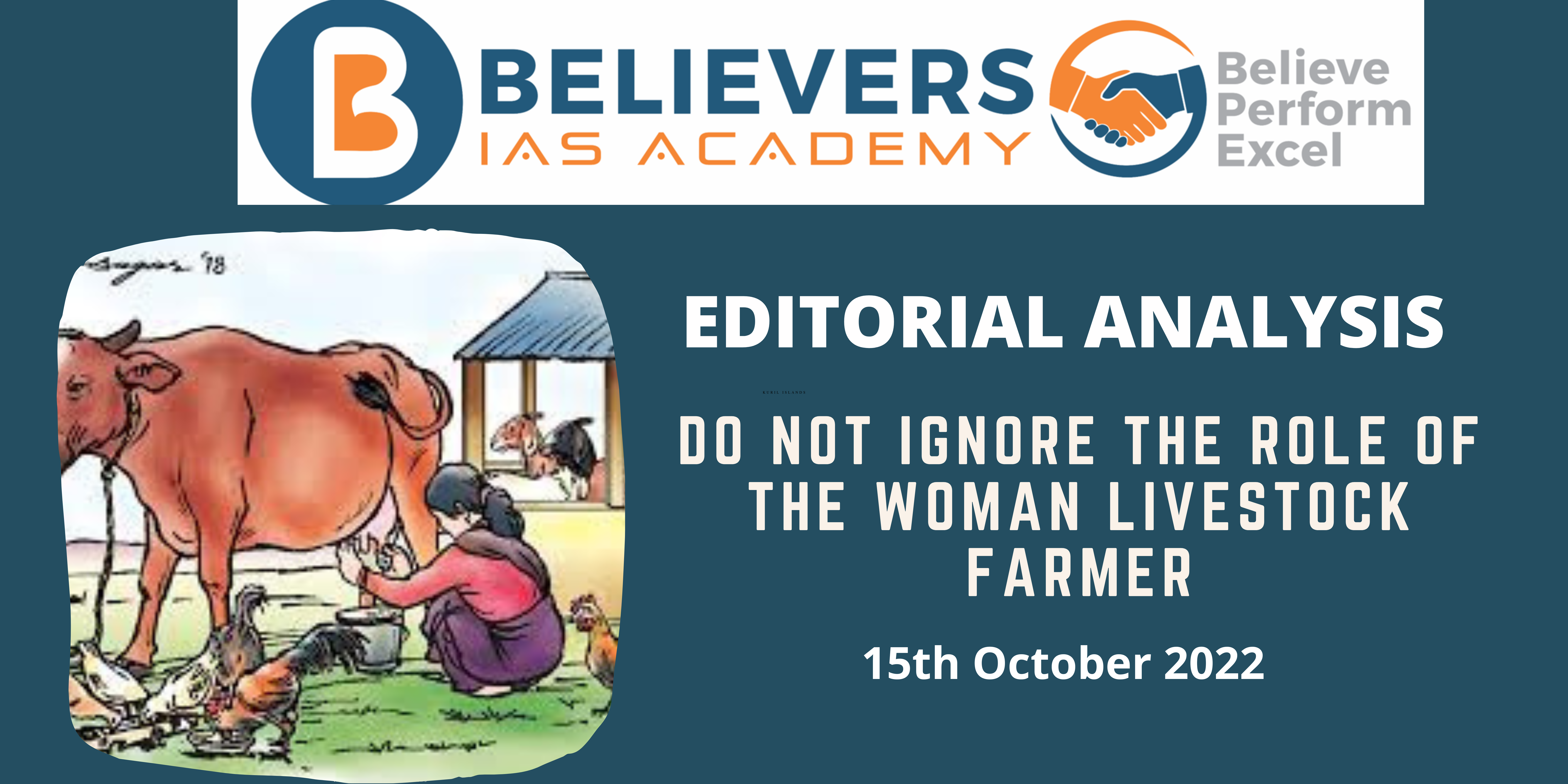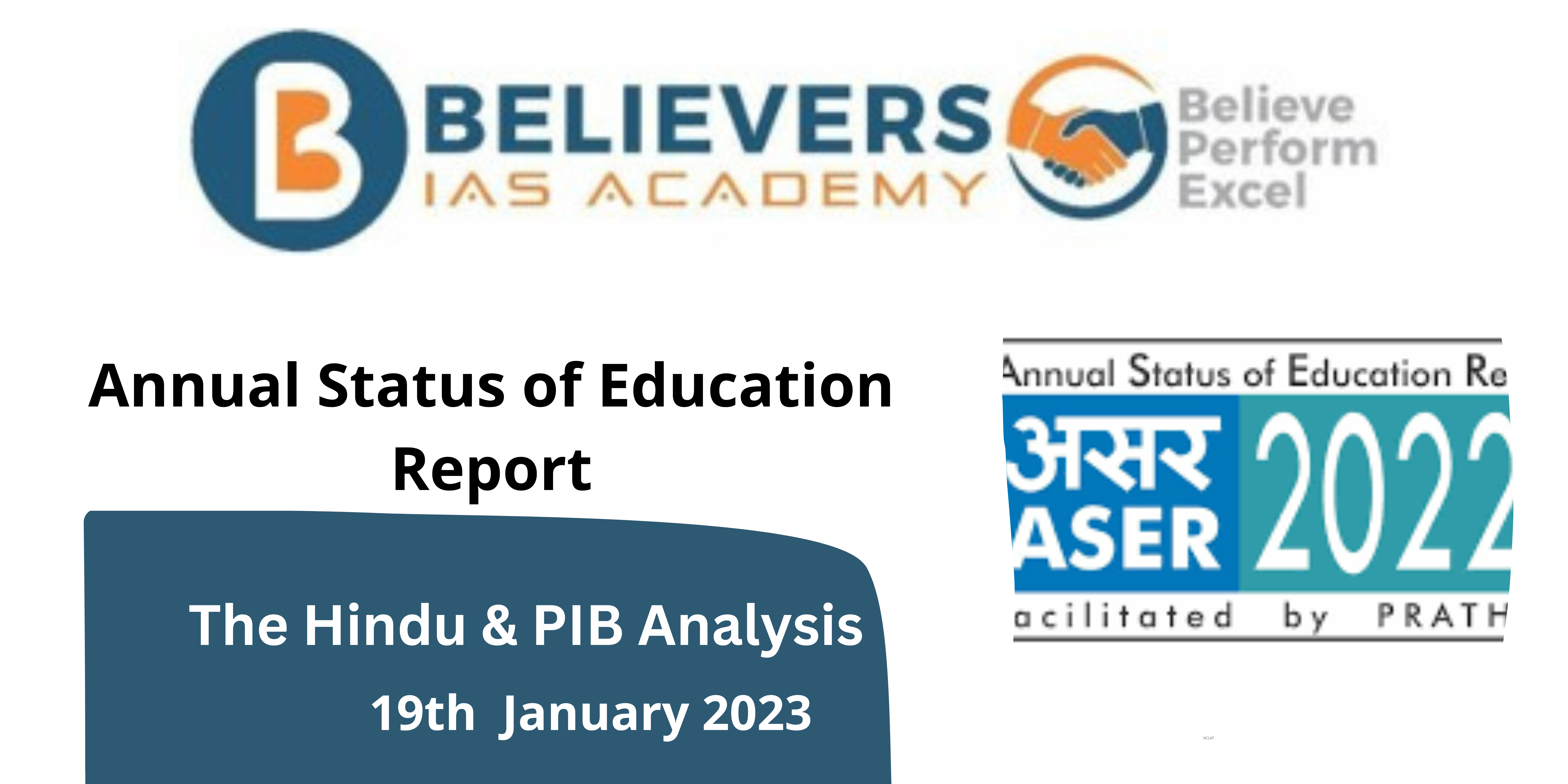Do not ignore the role of the woman livestock farmer
#GS-03 Economy, #GS-02 Social Justice
For Mains:
About livestock farming:
- The livestock sector is one of the most rapidly growing components of the rural economy of India, accounting for 5% of national income and 28% of agricultural GDP in 2018-19.
- In the last six years, the livestock sector grew at 7.9% (at constant prices) while crop farming grew by 2%.
Women and livestock farming:
- The majority of women workers in rural areas (72%) are engaged in agricultural activities.
- There were five million women members in dairy co-operatives in 2015-16, and this increased further to 5.4 million in 2020-21.
- Women accounted for 31% of all members of dairy producer cooperatives in 2020-21.
- However, with the exception of participation in dairy co-operatives, specifically in milk marketing, women’s role in the livestock economy is not as widely known or discussed.
The concerns with women in livestock farming:
- Conventional labour force surveys fail to accurately record women’s work in livestock-raising.
- The two significant reasons for this are the sporadic nature of work undertaken for short spells throughout the day and often carried out within the homestead, and women’ own responses.
- Women often do not respond with livestock farming as an economic activity.
- One way to adjust official statistics for this error is by calculating an augmented work participation rate.
- In other words, in addition to women reporting themselves as engaged in economic activity, this estimate includes women who reported themselves as “engaged in domestic duty” or care work for a major part of the year but spent time on specific activities such as kitchen gardening, household dairy/poultry, paddy husking, etc.
- Based on this data, it becomes evident that women livestock farmers are not visible to policymakers, and one reason is the lack of gender-disaggregated data.
- The Periodic Labour Force Survey fail to collect data on specific activities of persons engaged primarily in domestic duties.
- The reach of extension services to women livestock farmers remains scarce
- According to official reports, 80,000 livestock farmers were trained across the country in 2021, but we have no idea how many were women farmers.
- Women in poor households, without collateral to offer to banks, finds it difficult to avail loans to purchase livestock.
- Women livestock farmers lack the technical knowledge on choice of animals (breeding) and veterinary care.
- Women are often not aware of the composition and functions of dairy boards and in many cases, men exercised decisions even in women-only dairy cooperatives.
The data collected:
- 12 million rural women were workers in livestock-raising, an estimate based on the Employment and Unemployment Survey of 2011-12.
- However, with the augmented definition, we estimated that around 49 million rural women were engaged in livestock raising.
- Hence women actually engaged in the livestock economy were approximately four times the official estimate.
- Statistics from India’s first national Time Use Survey in 2019 shows that 11% of rural women or 48 million women were engaged in animal rearing.
- Data from village surveys conducted by the Foundation for Agrarian Studies in Karnataka show that in every household that owned a milch animal, a woman spent at least two hours a day on animal rearing.
- The National Livestock Policy (NLP) of 2013 states that around 70% of the labour for the livestock sector comes from women.




